Introduction to Flower Frogs
Contents
Flower Frogs
Most popular during the first half of the 20th century, flower frogs were used to arrange flowers and were likely called "frogs" because they were set in water in the bottoms of bowls. Made from ceramic, glass, metal, or plastic, they came in a great variety of forms ranging from beautiful nudes to odd wire contraptions.
While flower frogs may have gotten their name because they were set in water, the term has come to include vases with lids that have holes to hold the stems of the flowers. The lids sit above the water, and the stems pass through the holes in the lid and down into the water. While a complete set would include both the lid and the vase, the lids are often called flower frogs and are collected on their own.
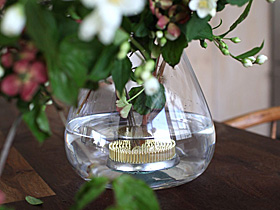
Photo courtesy KonMari.com
The practice of using flower frogs lost popularity when floral foam was introduced in 1954. You can stick stiff stems directly into floral foam, or poke holes with a pencil for softer stems.
The most common type of flower frog being manufactured today uses pins to hold the flower stems. In the moribana style of ikebana, the traditional Japanese art of flower arranging, pin flower frogs are not hidden, but prominently displayed. They are called kenzan, which translates to sword mountain.
Since flower frogs generally fell out of popularity, they have become quite collectible. The most common forms are presented below.
For further information see Identification Resources.
Common Forms
Flower frogs were made in an almost unimaginable number of different forms. Here I will describe the most common forms of glass and ceramic flower frogs, and introduce the vast array made in metal.
Blocks: Blocks, or non-figural flower frogs, are distinguished by the characteristic of not having a figure on top.
Blocks came in two forms:
- Inserts: Typically shaped like a hockey puck, inserts were sold by themselves or with a matching bowl. Flower stems were placed in the holes of the "frog" as it set in water in a bowl.
Most inserts had feet to hold the insert up, off the bottom, so that water could circulate into the holes. In some cases the "feet" were in the form of a rim around the perimeter of the bottom with gaps in it to allow the water in.
Most inserts were made of ceramic or glass.
- Lids: Typically shaped more like a Frisbee, lids sat on top of a vase. Flower stems were placed through the holes and down into the water.
However, many lids also had feet. This made it possible for them to be used either as a lid to a vase, or as an insert sitting in water in a bowl.
Most lids were made of glass.

Ceramic insert sitting in water in a bowl
Note: Though they might not have been designed to sit in water, lids are now commonly referred to as flower frogs and are collectible on their own without the vase they were made to sit on.

Glass lid sitting on top of a vase
More Examples of Inserts and Lids
Click on an image to enlarge it


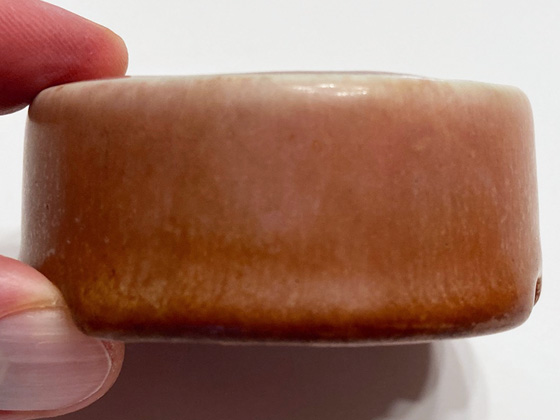


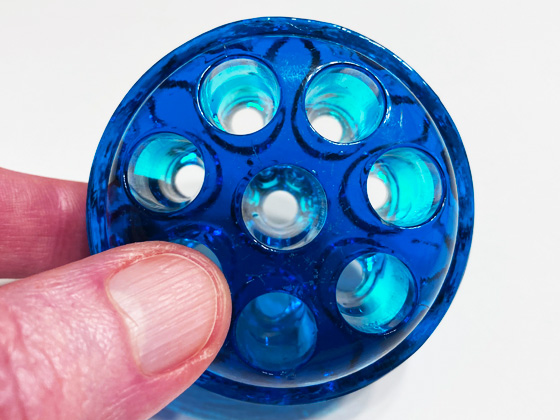




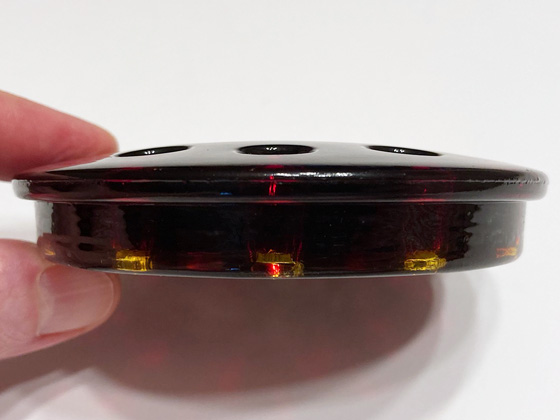
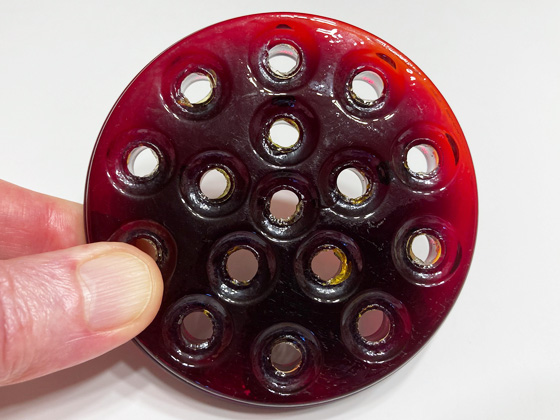

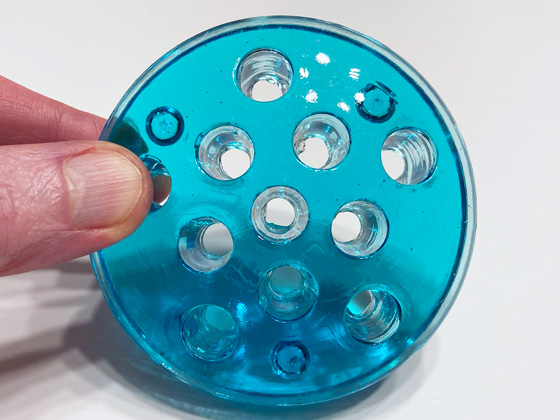


Figurines: Most figurines are in the form of a figure sitting on top of a base that has holes in it; others incorporate the holes directly into the figure.
Most figurines were made of ceramic or glass.
Click on an image to enlarge it
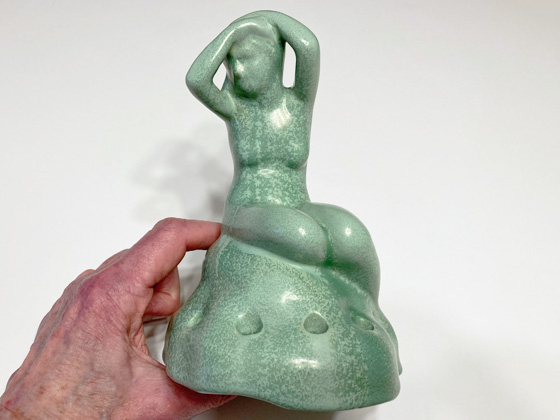


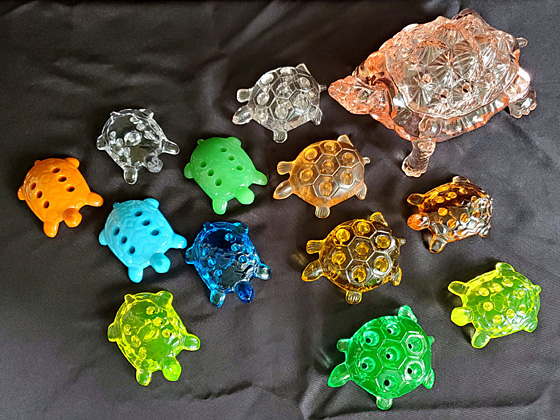
Metal Flower Frogs: Metal flower frogs came in an amazing variety of forms ranging from artistic sculptures to molded cages to collections of sharp pins. Wire contraptions remind one of Alexander Calder's beautiful mobiles.
Most metal flower frogs have attractive patinas ranging from iron rust to copper greens, and a collection displays a variety of different metals. Some incorporate plastic in their design.
If you enjoy strolling through a museum, you'll likely enjoy a quick scroll through my eclectic photo collection of over 500 different Metal Flower Frogs.
What to Collect
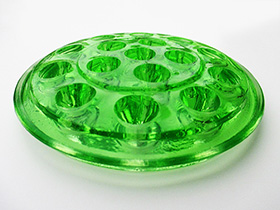
Most begin by collecting every flower frog they find that is pretty or interesting, and affordable. In time, and with a home filling with flower frogs, they become a bit more selective. I came to have a special appreciation for just a few manufacturers, and later limited my collecting to only one.
I always loved colored glass and got the idea to collect flower frogs when I saw a pretty green glass flower frog on the web. It was an exciting idea because I missed antiquing; I'd stopped about 10 years earlier when I'd fully decorated my home.
I only collected glass at the outset, but then couldn't resist a beautiful pink ceramic block with raspberry-colored spots. That got me started on ceramics, and I fell in love with the pretty glazes.
Matching Bowls and Vases: When I collected my first flower frog, shown just above, I had no idea that it was only a lid to a vase. It's quite common to collect only inserts, lids, and figurines, and not the bowls and vases meant to accompany them. Sets are hard to find, more expensive, and take up more room. I have just two sets of flower frogs with matching bowls that I use as centerpieces on tables.
But if you have a garden, you'll want at least a few sets so you can display your flowers! You'll find some pretty examples on my Flower Frogs in Use page.
Click on an image to enlarge it
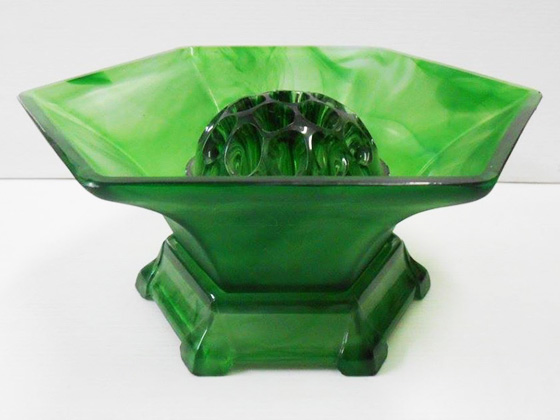


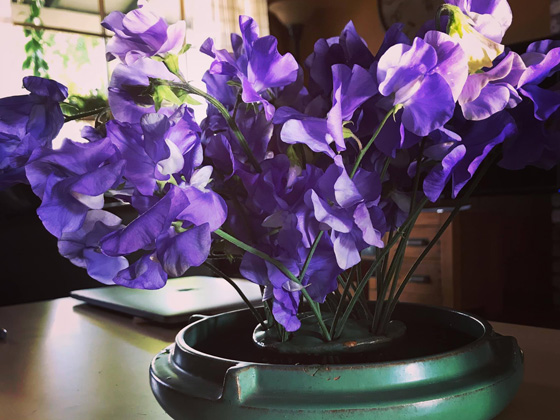
Other than Flower Frogs
Many flower frog collectors expand their collections to include related items such as small vases and wall pockets that hold flowers. And sometimes items that simply look like flower frogs, whether by intention or misidentification.
Here are a few examples of Art Deco-era cigarette holders, often misidentified as flower frogs. Note in the second image that the slots that hold the cigarettes have closed bottoms. If this were a flower frog, the bottoms would be open so that the flower stems would pass through and into the water in the bowl the flower frog was sitting in. Also, the cat is designed to hold wood matches, as is the rectangular area on the back of the camel.
Other examples combine cigarette holders with ashtrays, making it more obvious that they were designed for cigarettes.
Click on an image to enlarge it
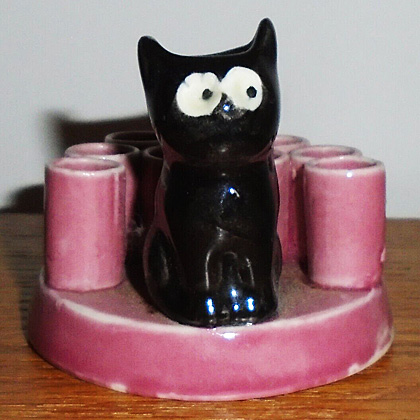
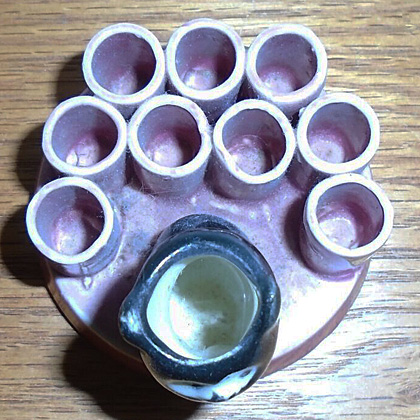
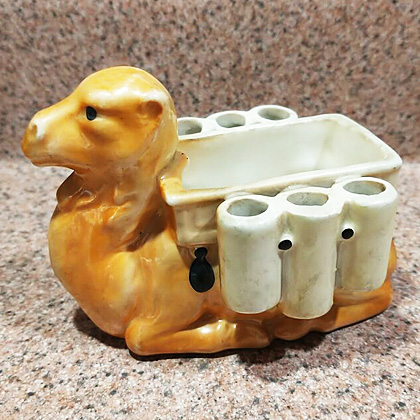

How to Collect

I fell in love with Haeger glazes
Where to Find Flower Frogs: This topic might seem unnecessary as the answer is both simple and obvious, anywhere you find antiques. However, as happened to me, many collectors eventually zero in on a certain manufacturer or form of flower frog. I limited my collecting when I fell in love with a particular manufacturer, but also out of necessity as I was running out of room to display my collection.
While I always enjoy going out and shopping for antiques, with the limits on what I collect it's near impossible to find a new piece for my collection unless I turn to the web. My primary sources are, in order of success, eBay, Facebook groups, and Etsy. There are many other online sources, most notably auction houses and Facebook's Marketplace. But with my limits, they are rarely worth my time and sellers aren't always willing to ship.
Price: I have always accepted the axiom that anything is worth whatever someone is willing to pay for it, and who can possibly know what that is? Therefore, I never fault a seller for "testing the waters" with a high price, dropping it in steps as necessary. However, this means that if you look at eBay listings to determine the value of a piece, you may find some very inflated and misleading prices.
The best way to determine the value of a piece is to look at sold prices. On eBay, click on Advanced next to the Search button, and then check the Sold items box. Professional sellers, and those with large collections to sell, may find it worthwhile to pay a fee to WorthPoint for a more extensive source of information on both identification and pricing.
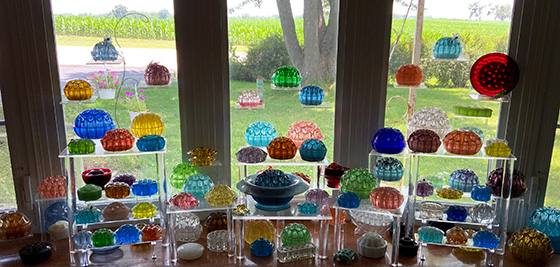
[Photo courtesy Bucaro Laura]

